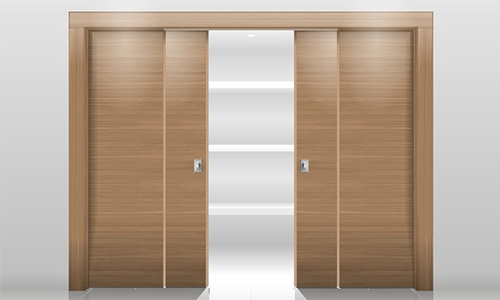One of the most important features of any room is the sliding door. As such, it has to be visually appealing, functional and durable since it will be used regularly. Below are the five things you need to know before installing the sliding door of your dreams.
Go After the Quality
Sliding doors are susceptible to different factors and elements. You need to install one that is highly durable with the best quality possible. Not just that, it is also important that it slides smoothly and silently so as not to cause annoying squeaky sounds. A sliding door with quality hardware must also go with your chosen interior. It is significantly more expensive than other entryways but its advantages outweigh its costs.
Amount of Space
A sliding door can be used to maximise the space you have. However, it also requires some space so it can function with ease and convenience. Single sliding doors need wall space on one side as big as the door width. Double sliding doors need wall space on both sides as big as the individual door width. It is necessary to ensure that the wall space is clear from any other barriers like light switches, outlets, windows, vents, doors or artwork that might impede the door or scratch it as it slides open.
Door-to-Doorway Ratio
Sliding doors are installed through a track outside the room which covers the doorway. However, there may be gaps between the wall and the door. To ensure that there are no issues like gaps, the door needs to be at least inches wider than the opening. For instance, a five-foot door must cover a four-foot opening. It is important to purchase a track that’s twice the width of your door: A five-foot-wide door takes at least ten feet of track to slide completely open. For wider doors, cut the track to fit and join the pieces with connectors available from the hardware manufacturer.
Structural Support
Sliding doors can be heavy – up to 200 pounds or more, so for sturdiness, most people mount the track to a header, attached to the wall studs, above the doorway. A 2 x 6 cut twice as long as your track should do the trick. If you mount on wall studs, be sure there is a stud or woodblock at every interval on your track, including beyond the door opening. Wall anchors are not sufficient to support hanging these doors. Bonus: Mounting your door to a header positions the door far enough from the wall to clear the door frame and trim when sliding.
Handle and Latches
A handle or pull allows you to slide the door open and shut easily, and it looks great. This works on the outside, but you’ll need to install a recessed pull on the inside so the door clears the door jamb when it slides open. If your barn door is the entrance to a bathroom or bedroom, you’ll find different privacy latching solutions available, from a hook and eye closure to a latch with strike plate – even a decorative deadbolt will work. Choose handle, recessed pull and latch in a style and finish that complements your door and hardware.


